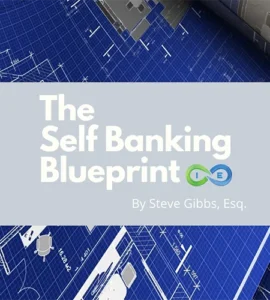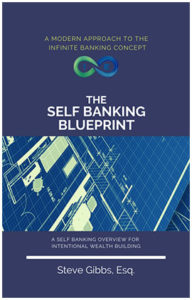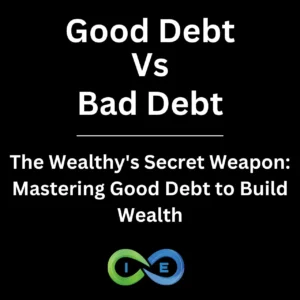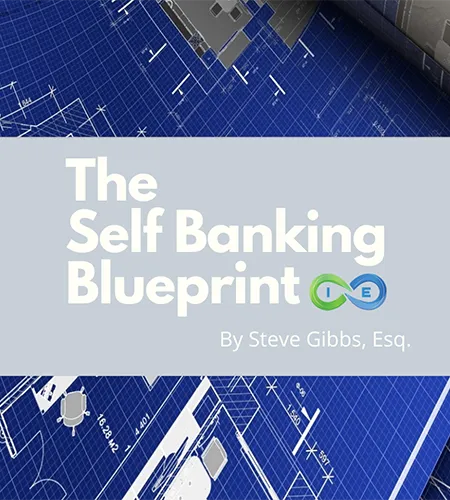Life insurance dividends represent one of the most misunderstood yet powerful benefits available to policyholders. In this comprehensive guide, we’ll explore how dividend-paying whole life insurance works, compare current dividend rates across top mutual insurance companies through 2025, and reveal strategies to maximize these tax-advantaged distributions. Whether you’re considering purchasing a new policy or optimizing an existing one, understanding how dividends function is essential for building lasting wealth through life insurance.
Table of Contents
- What Are Life Insurance Dividends?
- Historic Life Insurance Dividend Rates Chart
- Characteristics of Dividend Paying Life Insurance
- Participating Life Insurance Contracts Explained
- How Mutual Life Insurance Companies Pay Dividends
- Key Benefits of Life Insurance Dividends
- Why Dividends Are Not Guaranteed
- Dividend Paying Life Insurance vs. Other Permanent Insurance Types
- Frequently Asked Questions
What Are Life Insurance Dividends?
In the world of life insurance, mutual insurers offering dividend paying whole life insurance are somewhat of a unicorn. While these companies do exist, the modern era has seen many companies go the way of the stock market.
Not all life insurance policies are created equal.
Life insurance dividends are payments made by mutual insurance companies to policyholders that represent a share of the company’s profits. These dividends are considered a return of premium that were “overpaid” because the company performed better than expected. Under the U.S. tax code, these dividends are considered non-taxable distributions to policyholders.
Some policies, such as term life insurance or guaranteed universal life, focus mainly on providing a death benefit. You can consider these as “pure” insurance or “death” insurance, since they primarily benefit your beneficiaries after you’re gone.
Other policies are structured to accumulate cash value that you can access during your lifetime. The best life insurance policies are true “life” insurance, benefiting you—the insured—during your life, not just your beneficiaries after death.
Among cash value policies, only certain carriers and policy types pay life insurance dividends. This feature offers unique opportunities for wealth building that we’ll explore throughout this comprehensive guide.
Historic Life Insurance Dividends Chart
Whole life dividend information is gathered from public sources we deem reliable. However, we do not guarantee the accuracy of the information provided.
| Company | 2014 | 2015 | 2016 | 2017 | 2018 | 2019 | 2020 | 2021 | 2022 | 2023 | 2024 | 2025 | Avg |
|---|---|---|---|---|---|---|---|---|---|---|---|---|---|
| MassMutual | 7.1 | 7.1 | 7.1 | 6.7 | 6.4 | 6.4 | 6.2 | 6 | 6 | 6 | 6.1 | 6.4 | 6.4 |
| Penn Mutual | 6.34 | 6.34 | 6.34 | 6.34 | 6.34 | 6.1 | 6.1 | 5.75 | 5.75 | 5.75 | 6 | 6.12 | 6 |
| New York Life | 6 | 6.2 | 6.2 | 6.3 | 6.1 | 6 | 6.1 | 5.8 | 5.8 | 5.8 | 6.03 | ||
| Ohio National | 6 | 6 | 6 | 5.75 | 5.4 | 5.4 | 5.2 | 4.7 | N/A | N/A | N/A | N/A | 5.66* |
| Guardian Life | 6.25 | 6.05 | 6.05 | 5.85 | 5.85 | 5.85 | 5.65 | 5.65 | 5.65 | 5.75 | 5.9 | 6.1 | 5.86 |
| Northwestern Mutual | 5.6 | 5.6 | 5.45 | 5 | 4.9 | 5 | 5 | 5 | 5 | 5 | 5.5 | 5.16 | |
| Lafayette Life | 5.2 | 5.2 | 5.2 | 5.2 | 5.2 | 5.2 | 5.2 | 5.2 | 5.2 | 5.2 | 5.3 | 5.75 | 5.2 |
| Foresters Financial | 6.42 | 6.65 | 6.83 | 6.58 | 6.23 | 6 | 5.8 | 5.25 | 5.8 | N/A | 5.9 | 6.17** | |
| MetLife / Brighthouse | 5.25 | 5.1 | 5 | 4.7 | 4.7 | 4.7 | 4.7 | N/A | N/A | N/A | 4.86*** | ||
| Ameritas | 5.25 | 5.25 | 5.15 | 5 | 5 | 5 | 5 | 4.75 | 4.6 | 4.6 | 4.96 | ||
| Minnesota Life | 5 | 5.25 | 5 | 5 | 5 | 4.83 | 4.63 | ||||||
| National Life Group | 5.75 | 5.75 | 5.75 | 5.75 | 5.25 | 5.25 | 4.5 | 4.25 | 5 |
**Foresters rates through dividend payment to policyholders of record in 2022
***MetLife / Brighthouse through 2020
Characteristics of Dividend Paying Life Insurance
Dividend paying whole life insurance is almost always participating whole life insurance from a mutual company. More specifically defined as a:
- A participating life insurance policy,
- Designed as a whole life insurance policy,
- Through a mutual life insurance company
Participating Life Insurance Contracts Explained
The term “participating” may sound complex, but it’s quite straightforward. Thinking about life insurance as a contract, you agree to pay the insurance company to provide a certain amount of money to your beneficiaries upon your death.
To participate in this contract means that the policy holder shares in the profits and losses of the company during their lifetime. Sharing in the profits is a huge part of what receiving life insurance dividends is all about.
Whole Life Insurance Dividends
Participating life insurance contracts are whole life insurance policies, typically from mutual insurance companies, though some stock companies do offer life insurance dividends.
With whole life insurance, the premium amount is fixed as is the initial death benefit. Eventually the policy is paid up at which point the death benefit becomes permanent (or not subject to lapsing).
Cash value accumulation in a whole life policy can also be enhanced through what is called life insurance policy paid up additions up to certain maximums that are close to, but not exceeding MEC life insurance policy limits.
With this in mind, dividends are return of premiums (to the policy holders) which have been “overpaid” in a sense because the company has shown a profit at year end. This sharing of profits also relates to the policy holders being the owners in a mutual company versus a stock company.
Since dividends are considered return of premium under our tax code, life insurance dividends are not taxable. This is great news and one of the biggest benefits of whole life and why you will find that banks, corporations and the wealthy almost all have whole life insurance.
Want to see how different dividend rates affect YOUR policy? Our Pro Client Guide lets you run custom illustrations from top mutual companies to maximize cash value. Get free access now →
How Mutual Life Insurance Companies Pay Dividends
A mutual life insurance company is owned by the policy holders (or owners) versus a stock company which would be owned by the shareholders. Mutual insurance companies operate primarily for the benefit of its owners (policyholders). Mutual insurance companies operate under state insurance regulations that require them to prioritize policyholder interests over shareholder profits.
In contrast, stock companies operate for the benefit of its shareholders, which may not always align with the best interest of policyholders.
Essentially, to pay and receive a life insurance dividend is saying that the policy holder overpaid on the premiums and that the company performance exceeded expectations. So, after all expenses, the company concluded that dividends should be paid for overages. The return of premium is also the basis for a key tax advantage of dividends.
Dividend payments – total dividend amounts
Average dividend rate %
| Company | Total Dividend Payments 2014 to (Feb) 2023 | "Dividend Rate % |
|---|---|---|
| (10 year average from 2014 to Feb. 2023)" | ||
| MassMutual | $16.96 billion | 6.50% |
| Penn Mutual Life Insurance Company | $828.4 million | 6.12% |
| New York Life Insurance Company | $17.61 billion | 6.03% |
| Ohio National | $672.8 million (est) | 5.66%* |
| The Guardian Life Insurance Company of America | $9.57 billion | 5.86% |
| Northwestern Mutual | $57.6 billion | 5.16% |
| Lafayette Life | 5.20% | |
| Foresters Financial | 6.17%** | |
| MetLife | 4.86%*** | |
| Ameritas | 4.96% |
**Foresters Financial rates through 2022
***MetLife rates through 2020
| Company | 2014 | 2015 | 2016 | 2017 | 2018 | 2019 | 2020 | 2021 | 2022 | 2023 | 2024 | 2025 |
|---|---|---|---|---|---|---|---|---|---|---|---|---|
| MassMutual | 1.49B | 1.7B | 1.7B | 1.6B | 1.6B | 1.72B | 1.7B | 1.7B | 1.85B | 1.9B | 2.2B | 2.5B |
| Penn Mutual | 33.2M | 41.2M | 48M | 58M | 70M | 87M | 100M | 105M | 123M | 163M | 200M | 265M |
| New York Life | 1.37B | 1.56B | 1.7B | 1.8B | 1.78B | 1.8B | 1.9B | 1.8B | 1.9B | 2.0B | 2.2B | 2.5B |
| Ohio National | 59.1M | 68.1M | 80.6M | 75M | 90M | 100M | 100M | 100M | N/A | N/A | N/A | N/A |
| Guardian | 776M | 784M | 850M | 847M | 911M | 978M | 982M | 1.05B | 1.13B | 1.26B | 1.398B | 1.6B |
| Northwestern Mutual | 5.2B | 5.5B | 5.6B | 5.2B | 5.3B | 5.3B | 6B | 6.2B | 6.5B | 6.8B | 7.3B | 8.2B |
| Lafayette Life | Unknown | Unknown | Unknown | Unknown | Unknown | Unknown | 67.3M | 68M | 70.9M | Unknown | 103M | 123.3M |
| Foresters Financial | Unknown | Unknown | Unknown | 23.7M | 24.3M | Unknown | 24.4M | 24M | Unknown | Unknown | Unknown | Unknown |
| National Life Group | Unknown | Unknown | Unknown | 67M | Unknown | Unknown | Unknown | Unknown | Unknown | 26.5M | 25.5M | $25M |
Key Benefits of Life Insurance Dividends
- Offers tax advantaged growth
- You determine how they are used
1. Tax Advantaged Growth of Dividends
In a previous article focusing on the tax advantages of life insurance, we discussed that the cash value accrual in a life insurance contract is allowed to accumulate tax free inside the policy.
We also mentioned that no taxable income (or capital gain) is realized for amounts that do not exceed the total amount of premiums paid into the policy.
Finally, we mentioned that income is only realized when cash is actually withdrawn from the policy, and/or the policy is surrendered, and proceeds exceed the premiums paid. These advantages are a feature of all cash accruing permanent life insurance policies.
With all of the above in mind, dividends offer an additional tax advantage because, when paid, dividends are not recognized as taxable income. So whether the dividend is withdrawn as cash or rolled back into the policy, favorable tax treatment allows for more compounding tax advantaged growth.
Tax favorable growth through dividends is a key aspect of the infinite banking concept® which incorporates the velocity of money and the idea that your money should always be moving, earning and growing.
Follow any of the above links for more, but realize that you need to keep your money moving if you truly want to gain wealth. Stagnant money, such as funds in a 401k, is dead money.
2. Freedom to Decide How Dividends are Used
Most dividend paying life insurance policies offer the policy holder the right to choose how to use dividends. Usually the choices for using life insurance dividend payments are:
- Apply toward the next year’s premium payments
- Buy additional term life insurance
- Apply toward repaying outstanding policy loans
- Purchase additional whole life insurance
While the above choices are mostly self explanatory, the last two are somewhat near and dear to fostering wealth building with life insurance.
The first 2 choices (#1 and #2) above focus on either maintaining the policy in force OR a preserving maximum death benefit, whereas the last 2 choices are preferred in many cases because they facilitate the ongoing performance and growth of the policy cash value.
THE ULTIMATE FREE DOWNLOAD
The Self Banking Blueprint
A Modern Approach To The Infinite Banking Concept

Applying Dividends to Policy Loan Repayment
One of the central components to infinite banking is to pay back policy loans, like a business, with interest just like you would to any other third party lender. This not only covers the interest rate fixed by the insurance company but can allow for additional cash value growth due to additional amounts paid back into the policy, or to fund a new policy if your existing policy is at its limits.
Purchasing Additional Whole Life Insurance
Using dividends to purchase additional paid up whole life insurance is a way to systematically increase both cash value and death benefit in the same way as paid up additions would do so without violating the MEC rules for life insurance contracts.
By growing your cash value and death benefit you will be maximizing your legacy because your policy will pay an ever increasing death benefit to your future heirs upon your passing, unlike term life that will most likely expire worthless. It is also superior to other types of permanent life insurance where the death benefit remains the same and never has a chance to grow with you.
Thus, it makes sense to roll the dividends back into the policy by purchasing additional whole life insurance so that your cash value grows, compounded by a guaranteed interest rate and dividend growth and your death benefit grows, so you leave as much money as possible to your estate.
Why Dividends Are Not Guaranteed
Dividend paying whole life policies have a guaranteed portion and a non-guaranteed portion of the policy return, and dividends are part of the non-guaranteed portion.
Typically, the death benefit and an annual return on the cash value is guaranteed. The payment of dividends is part of the non-guaranteed portion of the policy contract.
The likely reason for this non-guarantee, despite the astounding history of life insurance dividend payments by major carriers, is that dividends can only be calculated after the expenses for the year are deducted.
Still, it is highly recommended to look at the historic performance of your chosen companies when evaluating between various dividend paying whole life companies.
Many of the top mutual companies have paid dividends for over 100 years, paying dividends to policyholders even during the Great Depression, and more recently during the Great Recession.
Want to see how different dividend rates affect YOUR policy? Our Pro Client Guide lets you run custom illustrations from top mutual companies to maximize cash value. Get free access now →
Dividend Paying Life Insurance vs. Other Types Permanent Life Insurance
We already briefly mentioned who the winner is in the saga between whole life vs term life insurance.
However, it would be a shame to get this far in our discussion and yet fail, as many have, to point out the other kinds of permanent life insurance that DO NOT pay dividends.
Namely, the genre of permanent life insurance known as universal life policies DO NOT pay dividends (at least to my knowledge to date).
Why Universal Life Policies Don’t Pay Dividends
There are a few reasons for this as follows:
- Universal life policies are not participating
- Universal life policies offer market based returns
- Universal life policies do not fix premiums (usually)
Not Participating
The best example, and most popular type, of universal life policy is indexed universal life.
Even if a universal life product is offered by a mutual company, these policies do not operate by the same rules as a whole life product.
By definition these are NOT participating policies because a different formula, and philosophy, is applied when calculating the policy returns.
Market Based Returns
Whereas a participating whole life policies offer minimum guaranteed returns, with a non-guaranteed potential return based upon company performance, indexed universal life policies offer a maximum guaranteed return based upon the performance of any number of selected market indexes.
So performance is tied to the financial markets rather than the performance of the mutual life insurance company directly.
No Fixed Premiums
Another important difference between dividend paying whole life policies VS universal life policies is that the former is a “fixed premium policy”, whereas universal policies are known for offering flexible premium payments.
Remember that a dividend is based upon a return of premiums paid and in the world of universal life, payments may be extremely inconsistent from policy owner to policy owner.
Perhaps this is another underlying philosophical difference between participating and non-participating policies.
Because the premiums aren’t fixed, or required to be fixed, the participation aspect of the policy gives way to the element of flexibility. However, what appears to be the trade off is the loss of opportunity for dividend payments.
Why Dividend-Paying Whole Life Matters
One of the greatest benefits of whole life insurance is its stability. In a world of change, our financial foundation should have a “safe bucket” from which we can go to avoid the often chaotic atmosphere that surround most of our investments.
Whole life insurance is an asset from which you can brave the stormy seas, free from the emotional drain that all too often capsizes our best laid plans, sinking our financial vessels to the bottom of the sea.
Frequently Asked Questions About Life Insurance Dividends
How are life insurance dividends calculated?
Life insurance dividends are calculated based on the company’s overall performance, including mortality experience, investment returns, and operating expenses. When the company performs better than projected in these areas, the excess profits are returned to policyholders as dividends.
Are life insurance dividends taxable?
No, life insurance dividends are generally not taxable. They’re considered a return of premium by the IRS, making them tax-free up to the amount you’ve paid in premiums.
Which insurance companies pay the highest dividends?
Based on historical data, companies like MassMutual, Penn Mutual, and New York Life have consistently paid some of the highest dividend rates. However, past performance doesn’t guarantee future results.
How often are life insurance dividends paid?
Most companies pay dividends annually, typically on the policy anniversary date.
Can I rely on dividends to pay my premiums?
While many policyholders do use dividends to offset premium payments, dividends are not guaranteed. It’s generally not recommended to rely solely on dividends for premium payments unless your policy has been in force for many years with a strong track record.
Ready to Maximize Your Whole Life Dividend Performance?
Don’t settle for average returns on your dividend paying life insurance. Our team of specialists can help you:
- Run custom illustrations from top dividend-paying companies
- Design your policy for maximum cash value accumulation
- Optimize premium structures for your specific financial goals
- Compare actual performance data across leading mutual insurers
Every 0.1% increase in dividend performance can mean thousands more in your pocket over time.
THE ULTIMATE FREE DOWNLOAD
The Self Banking Blueprint
A Modern Approach To The Infinite Banking Concept






12 comments
cindy
Question – We just received notice on whole life policy that “we will be decreasing the dividend scale by 60% beginning on Jan 1, 2025.”
What is the meaning/ impact of this action. Of late the dividend pays premium with some value left over for a cash back amount.
Do we expect less dividend due to company having greater expenses –or what?
Thank you
Insurance&Estates
When a life insurance company announces a dividend scale decrease, they’re telling you they’ll be paying lower dividends on policies than previously projected. A 60% reduction is substantial – much larger than typical adjustments.
As for why this is happening, several possibilities exist:
The company may be experiencing lower investment returns in their general portfolio
They could be facing higher expenses or claims than projected
They might be adjusting to prolonged low interest rates or other economic factors
In some cases, it could indicate financial challenges at the company
Brian
Just now beginning to look into and understand the IFC ins and outs. Please confirm or further explain how to grow your cash value when you repay your policy loan from the insurance company. I understand the PUA riders, but is that different from growing cash value via loan repayments?
Thank you …
Steven Gibbs
Hi Brian, great question. The strategy is to pay back policy loans at rates that would commonly be charged by banks or other lenders. So if the company is charging 5% interest on the loan, and an average loan rate for the type of loan is 10% or more, you could, subject to MEC limits, pay yourself that additional interest, thereby growing your cash. This is of course subject to your specific policy’s MEC limit and you would need to determine with the company how much room you have to add cash. I hope this helps clarify.
Best, Steve Gibbs, for I&E
Steven Gibbs is a licensed insurance agent, and the following agent
license numbers of Steven Gibbs are provided as required by state law:
Resident License; AZ agent #17508301,
Non-resident Licenses: TX agent #2273189, CA agent #0K10610,
LA agent #769583, MA agent #2049963, MN agent #40563357,
UT agent #655544.
John R.
I have a whole life policy and chose the annual dividend to purchase paid-up additional insurance. Two questions: 1) If I predecease my wife, will she have to pay income tax on the growth from the paid-up additions? 2) If my wife predeceases me, and I’ve not chosen a method to remove my policy from the final estate tax calculation, will the growth of the policy [minus my cost basis] become part of my annual income and taxed accordingly in the year of my death?
SJG
Hi John, those are questions to direct to your estate/tax attorney as it would be risky to comment here for many reasons. Thanks for inquiring and best to you.
Steve Gibbs, for I&E
Steven Gibbs is a licensed insurance agent, and the following agent
license numbers of Steven Gibbs are provided as required by state law:
Resident License; AZ agent #17508301,
Non-resident Licenses: TX agent #2273189, CA agent #0K10610,
LA agent #769583, MA agent #2049963, MN agent #40563357,
UT agent #655544.
Dev Nair
Max funded indexed UL policy is mimicking WL policy features does have tax shelter feature for which one has to pay minimum premium to make MEC compatible. There is a max premium payable when you have suffient fund available. IUL seems to have low insurance cost, linking to maximum market return, Leveraging, setting zero floor and max cap are are possible. Ther seems to more chance of increasing cas values in IUL policy compared WL policy. What is the reality in real world?
SJG
Hello and thanks for commenting, you said it actually, IULs are more a matter of “chance” whereas whole life are a matter of guaranteed returns plus dividends. Admittedly there is some level of chance with dividends; however, there is also 100+ year history with solid companies and the companies are competitively incentivized to offer them and pay at competitive rates. To me that’s the real world and the rest is up to the consumer to conclude the ideal product for them.
Best, Steve Gibbs for I&E
Ken
Hi,
Ownership of a very old whole life insurance policy with a face value of $1000 on which I’m the beneficiary was recently transferred to me from my elderly mother. After checking the policy details online, I found that the death benefit is now around $2700, the cash value is about $1900, and the “maximum dividends available” is around $1200. I don’t want to take the cash value now because I’d be walking away from about $800 in death benefits (which the way things are going will likely be paid soon) but wonder if I could withdraw say $1000 from the “maximum dividends available” and only reduce the death benefit by around $1000? I realize that withdrawing $1000 will make a few dollars difference in future dividend payments, but I’m not worried about that. Also, I would think that leaving $200 in the dividends would be plenty to cover future premiums in the outside chance that future dividends aren’t enough to pay them. I just don’t want a withdraw of $1000 to mess up the policy. I don’t think it would, but this stuff is complicated and I could be missing something.
Thanks,
Ken
Insurance&Estates
Hello Ken, thanks for reading and inquiring. I’ve forwarded your question to our National Sales Director Jason Herring who can discuss your questions in detail if you’re interested, as I don’t think a blog comment forum is the best given your detailed concerns.
Best, Steve Gibbs, for I&E.
Mary Meyer
If I sell my stock, will I still have dividends to pay premiums?
Insurance&Estates
Hello Mary, thanks for visiting. I’m not sure I understand your question, yet in general you wouldn’t keep dividends from stocks if you sell them. This article, however, refers to whole life insurance dividends or dividends paid to you by a participating whole life insurance company based upon your ownership in a whole life policy from a mutual company. Understand that we CANNOT offer financial advice concerning your stocks and you should seek an independent expert consultation from a licensed financial professional concerning your specific question. We are available to assist further if you need guidance concerning life insurance strategies or products.
Best to you.
Steve Gibbs